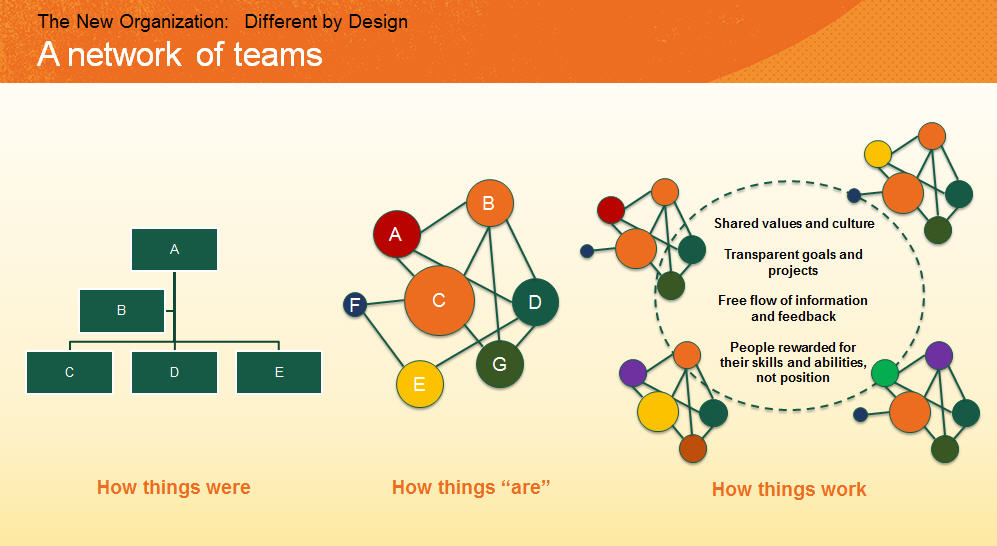Team Experience
You will explore how to create an employee experience that keeps staff committed, engaged and resentment free by prioritizing the employee experience. Your employees are the fuel that powers your innovation. You must keep them engaged, this article explores how.
In this training, you will
- Prioritize the employee experience.
- Explore how to keep and develop the best talent.
- Learn how to keep your team committed, engaged and resentment free.
- Promote goodwill on your team.
- Use mentoring and employee development programs.
- Train leaders to have an HR mindset.
Skills that will be explored
Building Culture From the Start
“If you’re comfortable with the amount of freedom you’ve given your employees, you haven’t gone far enough.”
— Laszlo Bock, Ceo of HUMU, Work Rules!
Culture is the determining factor of whether a work environment is conducive to innovation and success, and leadership dictates the tone. Whether employees are on board with new concepts and projects, and willing to adapt to changing times, is largely a reflection of the approach and strategy of human resources management.
An undesirable work culture is often characterized by an “us against them” mindset between employees and management, which is a common but toxic environment that is guaranteed to asphyxiate any creativity. Leadership should strive for a culture of collaboration, where employees are encouraged to push their boundaries and even make mistakes without fear of recrimination.
Leaders and professionals are wising up, changing their strategy, and focusing on creating a more palatable and sustainable employee experience.
The Employee Experience Matters
Times have changed. Loyalty is no longer guaranteed because workers are transient and quick to move on to the next opportunity. A survey of Gen Yers by The Guardian found that over 90 percent of millennials don’t expect to remain with an employer for more than five years. But a revolving door is expensive.
Today, employers must entice new talent and retain talent to be competitive. To attract new talent, recruiting must include outreach, branding, and a smooth onboarding experience. To retain talent, leadership strategies must provide development programs that bring quick results, lateral movement for maximum skills acquisition, create continuous cycles of promotion, and give employees the tools they need to manage their own careers.
According to Jim Guszcza, Deloitte data scientist, Josh Bersin, entrepreneur and influencer, and Jeff Schwartz, Deloitte HR strategist, employees want more flexibility, autonomy, and feelings of engagement. Here’s what the ideal employee experience looks like.

Source: Deloitte Insights
Fundamentally, the employee experience should be based on an emotional bond of trust between the employee and the manager. While levels of trust are difficult to quantify, the good news is that once you accept the idea that culture and leadership are interconnected, the steps to transformation are logical and straightforward – with the right approach.
Design Thinking for Employee Experience
Jon Kolko, VP of design at Blackboard, an education software company described design thinking for HRM as a strategy that “empowers employees to observe behavior and draw conclusions about what people want and need.” Design thinking places focus on the employee and, in this context, systems and strategies strive to create an employee-centric framework. Cisco changed its HR in 24 hours using this concept, and it can be applied to all HR groups.
- 17 % | The proportion of executives in a recent survey by management consultants Korn Ferry who considered their current leadership capable of accelerating innovation and improving profitability.
The following pillars of leadership explain in more detail the concept of design thinking for employee experience:
1. The Never-ending Feedback Loop
Leaders must listen incessantly. They must understand what employees need to be productive, creative, and meet the organization’s mission. The process can be as archaic as walking the floor and asking questions or as technologically advanced as an open forum on Fuze.
Employees should have the opportunity to make suggestions, share accomplishments, or be informed of leadership decisions. But the crucial point is that the conversation must always be on, and concrete change must occur as a result of the feedback. Otherwise, any contributions are pointless, and morale will nosedive.
2. Ongoing Growth Opportunities
A significant component of the employee experience is career growth. The ideal employee experience is one that includes an upward career trajectory, but it must be aligned with the needs and constraints of the organization.
In some cases, an employee will max out development potential within an organization, in which case the natural progression is moving to another role with another employer. In other cases, investment in employee development pays off during an employee’s tenure with a company, and the relationship can continue throughout the employee’s career through networks and relationships. This could even lead to strategic partnerships down the road.
In-house mentorships are a development strategy that provide learning opportunities without hefty cost implications. They improve communications and boost a culture of collaboration.
As time and resources allow, companies can get creative when it comes to growth opportunities. Google’s Gmail and AdSense initiated a “20 percent time” program, in which employees were given one day each week to work on a work-related side project of their choosing,”
Companies have many options for employee growth. We’ve outlined some promising tools, such as MOOCs, in our article, “Becoming a Learning Organization.”
3. A Safe Work Environment
For employees to feel free to flex their creative muscles, they need a work environment in which they feel safe – one that is non-threatening and tolerant of diversity. Diversity is key because the intermingling of different perspectives drawn from different minds is the catalyst for breakthroughs.
Jeanne C Meister and Karie Willyerd, cofounders of Future Workplace, explain in the Harvard Business Review that today’s workplace often has five generations from many cultures working together – Traditionalists, Baby Boomers, Gen Xers, Millennials, and Gen 2020 – and each individual should be equally valued for their contribution.
Real-time communication platforms – Cisco Spark, Slack, Microsoft Teams, or Facebook’s Workplace – social media, and cross-functional teams encourage greater collaboration, inclusion, and team-centric culture. It’s important to realize, however, that diverse backgrounds and increased age ranges in the workforce will mean that not everyone will be able to adjust at the same rate to new processes and technologies.
- 3x | The number of times that horizontal networks with a diversity of expertise were more likely to innovate than traditional vertical networks, according to Beth Comstock, vice chair of GE .
For more on inter-generational and multi-cultural collaboration see “Teamwork and Collaboration: Optimizing Diverse, Cross-Functional Teams”

Source: Deloitte Insights, 2017
4. Employee Motivation Based on Recognition and Rewards
The extent of employee buy-in, in other words commitment to a company’s goals, is a measure of employee motivation. If employees sense that their efforts are not valued, they are unlikely to be enthusiastic about future projects. Recognizing and acknowledging contributions can go a long way to fostering a mutually supportive relationship and successful results.
Achieving employee buy-in can be as easy as explaining the context of an employee’s work and the importance of that work within the organization. As tempting as it is to try to influence employee buy-in with the use of carrots and sticks, monetary or other tangible rewards are not a panacea.
According to Lisa Lai, leadership consultant, e-learning badges, points, or progressing through course levels can be enough to pique the interest of workers, and similar gamification strategies have become prominent corporate e-learning trends. E-learning games provide an environment in which employees learn, often without even realizing it, and provide personal development opportunities that enhance the employee experience.
- 50 % | The number of respondents in a CareerBuilder survey who found that employee recognition — in the form of awards, cash prizes, and company trips — encourage employees to stay with a company.
5. Embrace New Technology Solutions
Design thinking is a framework for reorienting leadership. And there’s a lot to cover. But there are many new agile solutions that can simplify employee management using intelligent systems and the right strategy for transformation.
When considering any technology changes, however, decisions should be made with the input of IT specialists who understand the organization’s needs, the technology involved, and the security issues implicated. Systems should be installed with an eye to the future, and the infrastructure should support future add-ons.
Financial and accounting specialists should weigh in on the budgetary constraints, and leaders must understand what the changes will entail in terms of staff training and possible capital reductions.
Leaders should also consider the possibility of outsourcing various functions, which might have fewer risk implications. The right companies have experts in their fields with access to the latest knowledge and up-to-date software solutions. Consultants can assess the status of your organization, define where you need to be, and outline how to get there.
In a nutshell then, for leadership for innovation, apply design thinking, an approach that has already proven its worth. From here, evaluate the culture and the corporate environment, and prioritize the employee experience. Because if you build a great culture, ideas will come.
The employment climate has become fiercely competitive, and managing, retaining, and developing talent is crucial to achieving competitive innovation for the future.
“Perhaps the biggest challenge for HR in leading engagement programs is shifting from a transactional, once-a-year mindset, to an always on, continuous listening approach to monitoring engagement.”
— David Brown, Josh Bersin, Will Gosling, Nathan Sloan, Contributors to Deloitte Insights.
Retaining Employees: How to Keep and Develop the Best Talent
What do Japanese culture and talent management for innovation have in common? In a word, “Kaizen.” Kaizen is a Japanese term that describes a sustained, long-term strategy to create incremental changes and improvements in processes over time.
Staff retention is a crucial component in talent management for innovation, and it requires a similar approach. Like Kaizen, it must be sustained, always “on,” and engage those involved – in this case, employees. Staff retention and management are not things to be discussed annually and then tabled for later prioritization.
Here are some insights into talent management and employee engagement:
1: Keep Staff Committed, Engaged, and Resentment Free
Carly Guthrie is an HR expert and leader. In an interview with First Round Review, she provides insights from her role as an HR consultant for tech companies, explaining why people quit and what employers can do to keep staff committed and engaged.
Guthrie finds that even mild feelings of anger, boredom, or dissatisfaction can cause someone to turn to a recruiter and consider switching employers. According to Guthrie, one reason why employees become disengaged and ultimately quit is because work encroaches on family time. For example, a manager might consider a happy hour good for building camaraderie, but if a happy hour is scheduled on a Friday, workers leave the office late, get stuck in traffic, and arrive home to their family late.
A company might schedule an early Monday morning meeting so that everyone can start the week on the same page, but this causes difficulties for staff who need to get their kids to school. It also cuts short employees’ weekends.
Guthrie wants employers to be more aware of workers’ needs and to respect employees’ personal time. Doing so will prevent feelings of resentment from seeping into the culture and will promote goodwill.
2: Promote Goodwill
The ideal workplace model is a community with purpose where people are so engaged in collaborating that they feel they are part of something bigger and important. For some workers, the option to work remotely is a clear motivator, and flexibility in work schedules is an often-cited need. However, remote work runs counter to the idea of building a sense of community and a unified culture.
The digital era has resulted in more team-based work; collaborative platforms and real-time solutions provide immediate communication, transfer of knowledge, and ultimately innovation. This transformation has occurred so rapidly that some companies that were actively promoting a remote work policy have decided to pull workers back into the office.
According to a group of human capital consultants for Deloitte, 38 percent of companies are functionally organized, which implies that around 60 percent have cross-functional teams. One organization studied was composed of 30,000 constantly shifting teams. The level of collaboration was such that remote work was too isolating for effective innovation to occur.
According to Rebecca Greenfield, contributor to Bloomberg, IBM Corporation, in an attempt to increase falling revenues, nixed working from home for 2,000 U.S. workers, and another 2,000 or so were asked to come to the office more often. The company was hoping that doing so would lead to more productivity and innovation. But IBM realizes that the challenge is to maintain goodwill with employees. Therefore, the company provides flexibility for some workers for whom close collaboration is less crucial, and employees can work from home to accommodate appointments and care needs.
For more on inclusion and collaboration read: “Could this be the Greatest Era for Innovation? HR Strategies for Collaboration in the New Organization”
3: Use Intelligent Mentoring and Staff Development Programs
Guthrie’s recommendation with respect to mentoring is to identify the skills that a person would benefit from acquiring by listening to their opinion and monitoring their progress. For mentoring, the pairing between mentor and mentee should make sense, and the rationale behind the pairing needs to be communicated to both parties.
An advantage of mentoring is that there is an immediate feedback loop, and it can be easier to spot a problem that might influence retention. Mentoring relationships are almost informal check-ins when it comes to employee satisfaction, and employees are more likely to confide in mentors if they feel dissatisfied and attracted to external opportunities. Trust is a large component of mentoring relationships; however, and they should be used to ensure employee development is on the right track, not as a performance management tool.
For more on mentoring read: “Organizational Learning for Innovation – It’s Mobile, Agile, and Visual”
4: Train Leaders to Have an Hr Mindset
Those who work in HR understand that managing employees is not about algorithms and digital technology, it’s about having empathy for concerns, building and managing relationships, and communicating. These are all traits that managers require, and managers should be trained to respond to the questions and issues that HR professionals face. If employees feel safe and comfortable enough to talk to their managers and leaders about problems, that’s a healthy culture.
5: Prioritize the Employee Experience
Employee engagement requires satisfying the wants and desires of workers, so it is worth finding out what motivates them and what they look for in an employer. According to the Best Practice Institute, people who love their workplaces were 94 percent more likely to perform better and 95 percent more likely to stay.
For example, Sarah Landrum, digital marketing specialist and author, explained that Millennials are attracted to companies that are involved in corporate social responsibility (CSR) because they want to work for the greater good. Companies that are active in CSR can use that to their advantage in their branding and marketing to attract and retain talent. As consumers, Millennials are already influencing brands to implement CSR in their operations.
“Millennials prefer to do business with corporations and brands with pro-social messages, sustainable manufacturing methods, and ethical business standards.”
— Sarah Landrum, digital marketing specialist and contributor to Forbes, 2017
Bring Talent Management to the Digital Era
The steps involved in listening to feedback, processing feedback, and taking actionable steps to address employee needs and concerns must be an ongoing process. However, it’s incredibly resource-intensive.
For that reason, HR leaders rarely have the required resources and are often unaware that there may be a retention problem until it is too late. Digital talent management solutions can constantly gauge the level of employee satisfaction and engagement and alert HR professionals that there may be a growing problem.
Staff surveys, for example, use employee feedback to gauge employee sentiment. From these data, changes can be instituted to improve the employee environment. These tools can be used in place of or as a supplement to the traditional performance review process. The advantage of using these systems is that staff retention can be managed before it becomes a bottom-line problem.
Real-time employee engagement platforms are another tool through which to take the pulse of workers, identify what drives them, create programs to improve engagement, provide managers with data insights and dashboards to help them take action, alert them to changes or outlier scores, and identify and fix engagement loops before they become problematic.
Stephanie Czajka, PR consultant, provides examples of engagement platforms include: Highground, which allows employees to set and track quarterly goals; PostBeyond, a platform on which employees can post and share articles; and WooBoard, where staff are rewarded for interacting.
Granted, these new solutions are without an established track record just yet, but digital solutions can offer a way to ensure that your company is successfully engaging employees. It makes sense that leaders take all the precautions they can to manage their most important asset for innovation in the digital age: talent.




